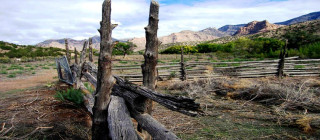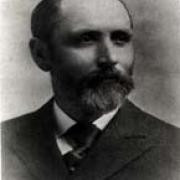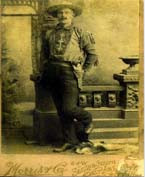The History of Range Creek 1885 - 2001

By Steve Gerber RCRP Historian
In 1884, Deputy U.S. Surveyor, Augustus Ferron discovered a small, perennial stream in a remote and unoccupied canyon on the plateau. He called the stream Ranch Creek. The following year, Ferron and four partners renamed the stream Range Creek and formed the Range Valley Cattle Company. The company claimed all the land and water on the West Tavaputs Plateau between the Price River on the south and Nine Mile Canyon on the north. Ferron's partners all came from New York and Pennsylvania to pursue mining and railroad interests in Utah. None of them had any experience in cattle ranching, but Ferron recognized the value of this previously undiscovered range and convinced the group to join him in the venture. The group filed seven Desert Land Entries along the creek, securing the valuable water and blocking the only route to the abundant summer range on the upper plateau.

The first Ranch Manager for the new enterprise was Clarence Allen, a Professor of Literature who had moved west hoping the dry air would provide some relief from his tuberculosis. The hard work and dust of Range Valley proved to be a bit too much for Allen, and he left the ranch after the first summer. Allen later became the first U.S. Congressman from the new state of Utah in 1896. His replacement was Joe Wing, the young nephew of one of the original Range Valley partners. Like his predecessor, twenty-four year old Wing had come west from Ohio seeking a cure to his dyspepsia, and an adventure in the wild, wild west. In 1898 Wing returned to his home in Ohio where he continued to serve as Company President until the ranch was sold in 1902. Wing became one of the leading agricultural spokesmen of his time and gained national prominence as an expert in sheep husbandry. As a correspondent for the Breeders Gazette, Wing often wrote of his experiences in Range Valley, and left some of the most important records of the early years of the canyon.
Range Valley Cattle Company continued operation until 1902, when the partners sold their interests to Utah cattle baron, Preston Nutter. In 1915, Range Valley was opened to homesteading, prompting several attempts to break Nutter's hold on the valuable land and water in the canyon. Helper Mayor and banker Joe Barboglio attempted to take control of the canyon by enlisting surrogate homesteaders to secure title to improved Nutter holdings. Protracted legal battles ensued and Nutter lost possession of the two most valuable pieces of property. Unfortunately, Barboglio’s own fortunes had declined and he was unable to take advantage of his victories. The Preston Nutter Corporation remained the primary landholder in the canyon until 1951 when the Range Creek holdings were sold to Ray Wilcox and his sons Don and Waldo. Don and Waldo divided the ranch following the death of their father. Don assumed control of the upper ranch on the plateau and Waldo retained the Range Valley portion. In December 2001, after 50 years in the canyon, Waldo Wilcox and the government of the United States agreed to a purchase price and the ranch was returned to the public domain.

For 115 years the remote valley along Range Creek was devoted to cattle ranching. Coupled with the spectacular summer range atop the Tavaputs Plateau, the canyon fattened thousands of cattle - and several bank accounts. In 1886 Joe Wing described the natural grass in Range Valley as chest high. 115 years later invasive weeds and tamarisk accompany the cottonwood trees and sage that greeted Gus Ferron. Irrigation ditches criss-cross the pastures and the remnants of early cabins dot the landscape. Old equipment, rusting away in scattered bone-yards whisper hints of a hard life. The isolated location and rugged terrain of Range Creek tested those who made their livings there. Its proximity to the famed Outlaw Trail made it an attractive hiding place for outlaws like Tom Dilly and Joe Walker. Their exploits have become a part of Western lore and their names a part of the landscape.
Archive: Joe Wing's grandson (Steve Wing) visits Range Creek